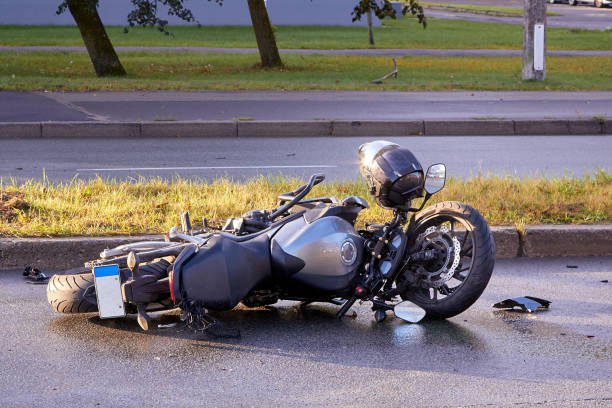Drones are hardly the first military technology to later evolve and become adopted for civilian uses. Plenty of technologies developed for military use are now part of our everyday lives, from microwave ovens to GPS satellite navigation and even the internet. However, the use of drones by civilians has proven particularly controversial, likely because of the implications that drone technology has on key issues such as national security and personal privacy.
Recently, the public has shown increased interest — and concern — in drone technology because of a series of drones appearing over sensitive military sites in New Jersey . Although officials at the White House and Pentagon insist that they do not pose a threat, there has been significant concern from citizens and lawmakers alike about the potential implications of drones flying above secure sites like these.
How drone technology has evolved beyond its military use origins
For military use, drones are an incredibly powerful tool with implications for reconnaissance, surveillance, and (when authorized) sometimes even delivering precision strikes. In combat scenarios, drones have become essential for gathering intelligence and ensuring mission success. They provide unparalleled situational awareness and operational flexibility by giving operators real-time imagery of target areas and allowing them to assess threats from a safe distance.
However, the capabilities of drone technology also make them appealing to many parties beyond the military. For example, some hobbyists have enjoyed using drones for exploration, and some business entities have found commercial applications for drones, while others have used drones for more strategic intentions like monitoring restricted areas or testing defenses. Unfortunately, it is difficult to know an operator’s true intentions, but drones have become highly versatile tools to serve various intentions.
Like any powerful technology, drones lend themselves to potential misuse in civilian settings — whether intentional or unintentional. Thankfully, there are certain signs that government agencies can look for to ensure public safety and national security. If drones appear in areas where they shouldn’t be — particularly near critical infrastructure — it’s a telltale sign that someone is gathering information or testing boundaries.
Addressing the challenges posed by citizen drone usage
That being said, because of their immense value as tools for reconnaissance and precision engagement for military combat, drones are — and should be — here to stay. The challenge arises when these same strengths are abused by operators using the technology in uncontrolled and unauthorized ways. The first step in curbing these negative use cases of drone technology is to improve education for operators, ensuring that they are familiar with proper procedures and all relevant regulations.
Ultimately, to control drone activity and limit the potential for harmful use cases, we must take an approach combining detection, mitigation, and regulation. In the military, we relied on layered systems to track and manage aerial activity. Local and federal authorities could implement similar systems to monitor drone flights and enforce existing regulations. With this level of collaboration between agencies, we will be able to further manage the risks associated with civilian drone use.
That said, this approach to drone technology may be easier said than done, as — like many other innovative technologies — drone use is expanding much faster than oversight. With military applications, each advancement in drone technology brought new rules and operational frameworks. If civilian drone follows a similar trajectory, regulations will increase to keep pace with the technology’s growing accessibility and capabilities.
The challenge with the mysterious drones that appeared in New Jersey is that no one has claimed responsibility or ownership of them. Since so little is known about these drones, their operators, or their intentions, it’s difficult to tell whether they are being used for purposes that benefit or harm our nation and its security. The response has largely been calls for increased transparency regarding the use and investigation of drones.
In response to the incidents in New Jersey, the Federal Aviation Administration issued temporary flight restrictions for several cities , including Hamilton, Camden, Evesham, Gloucester City, Westhampton, Burlington, Winslow, and Hancock’s Bridge, which went in place on December 18 and end on January 17. Drone operators who violate these restrictions may be intercepted, detained, and interviewed while their drones may be shot down.
Incidents like these remind us of the importance of addressing drone technology responsibly. Given drones’ power and potential abuse by wrongdoers, it’s entirely reasonable to be concerned about their proliferation among civilians. However, we must understand the potential importance of this technology for military operations, as this will help us better understand how to address its abuses.
Eric Brown — Eric Brown is an innovative leader with over 24 years of experience in the Special Forces as a Green Beret. During his military career, he led complex operations across 12 countries, excelling in crisis management, team building, and strategic planning. As the Founder and CEO of Imperio Consulting , Brown integrates his military background with sharp business acumen to develop customized solutions for C-suite executives and leadership teams. His approach, rooted in simplicity, adaptability, and collaboration, enables organizations to navigate challenges, build trust, and achieve exceptional outcomes. He holds a Master of Science in Defense Analysis from the Naval Postgraduate School and an MBA from ENEB. His achievements include the Defense Meritorious Service Medal and four Bronze Stars.
Copyright © 2024 California Business Journal. All Rights Reserved.
For California Business Journal Disclaimers, go to https://calbizjournal.com/terms-conditions/ .




